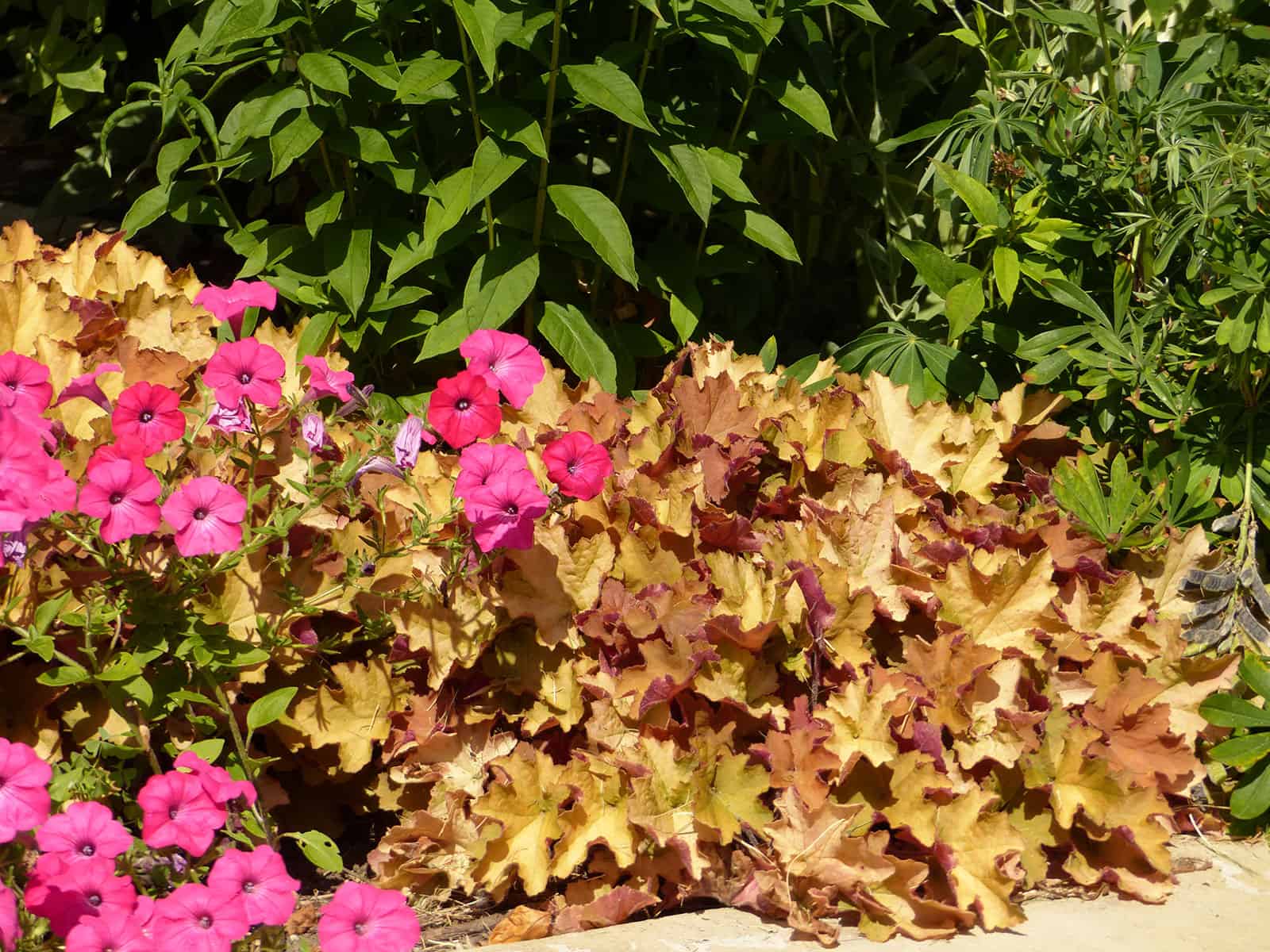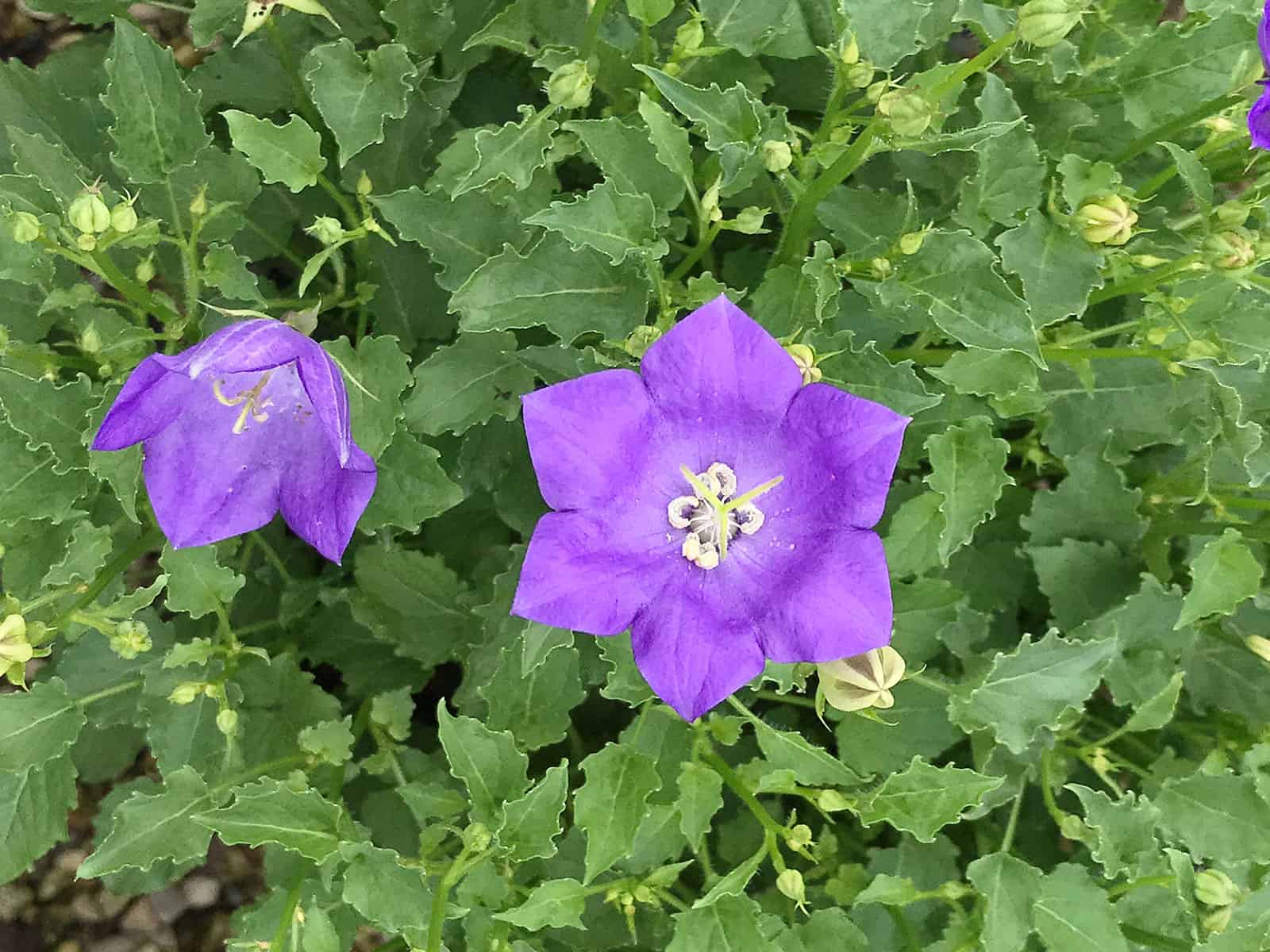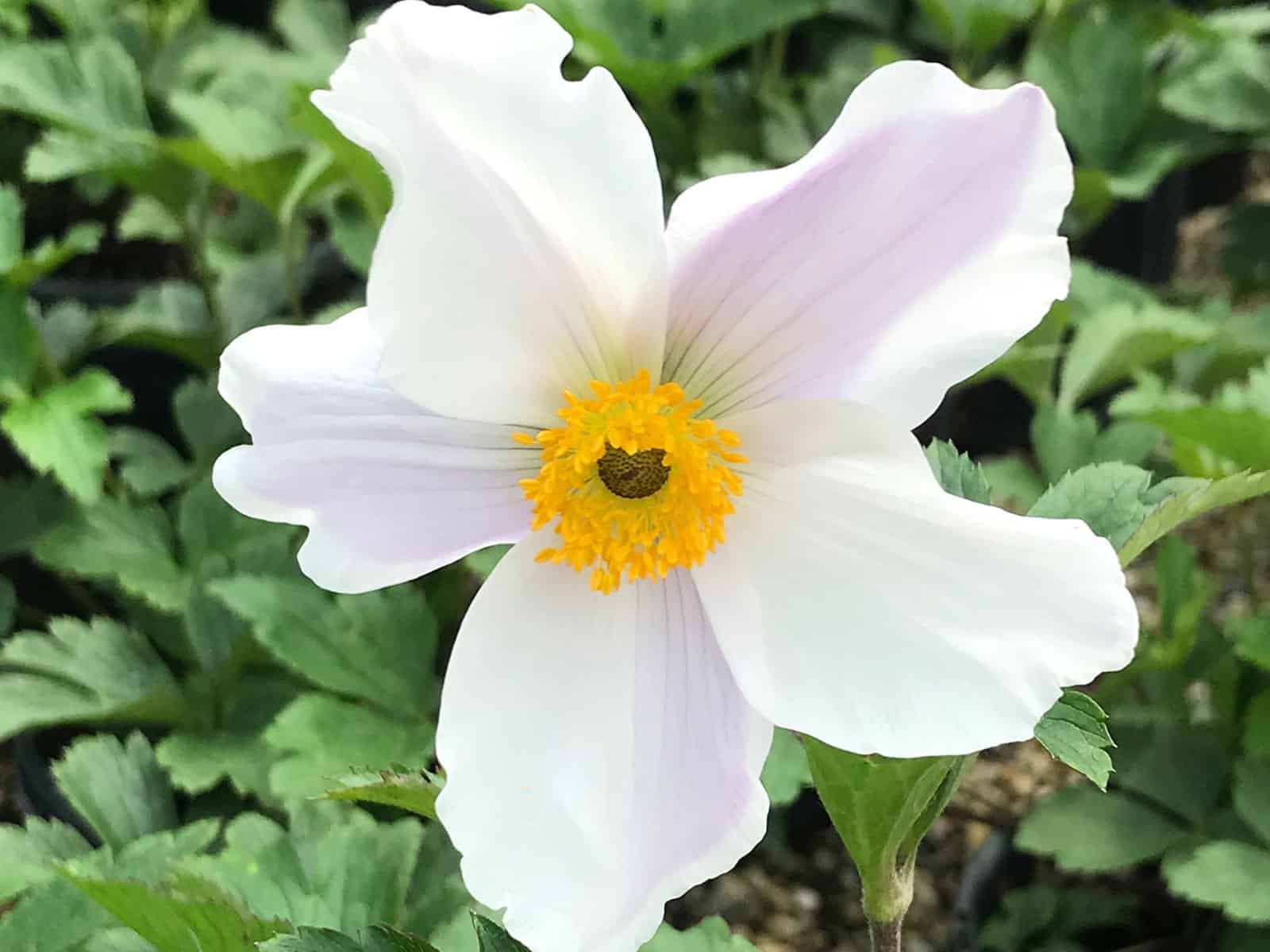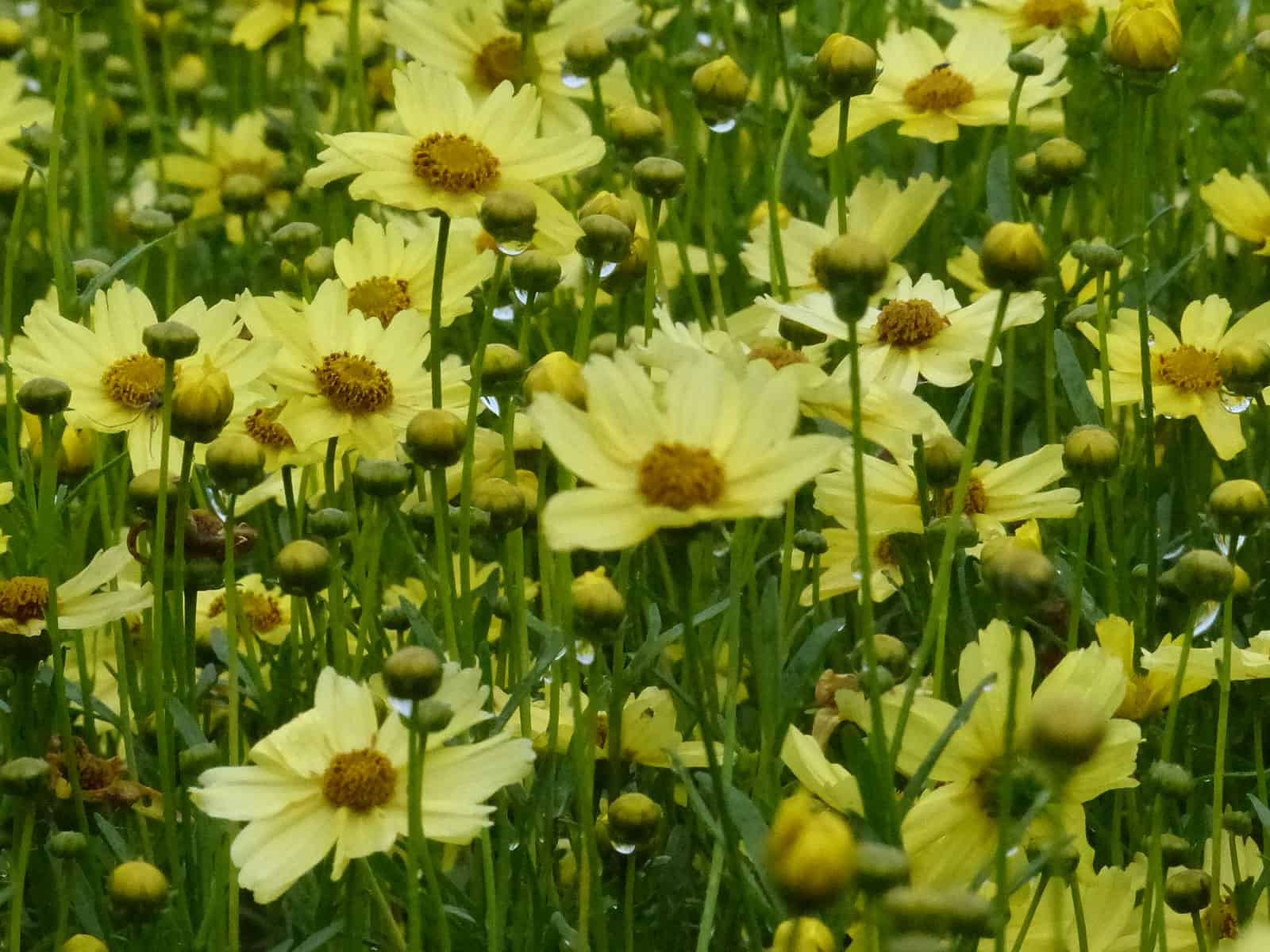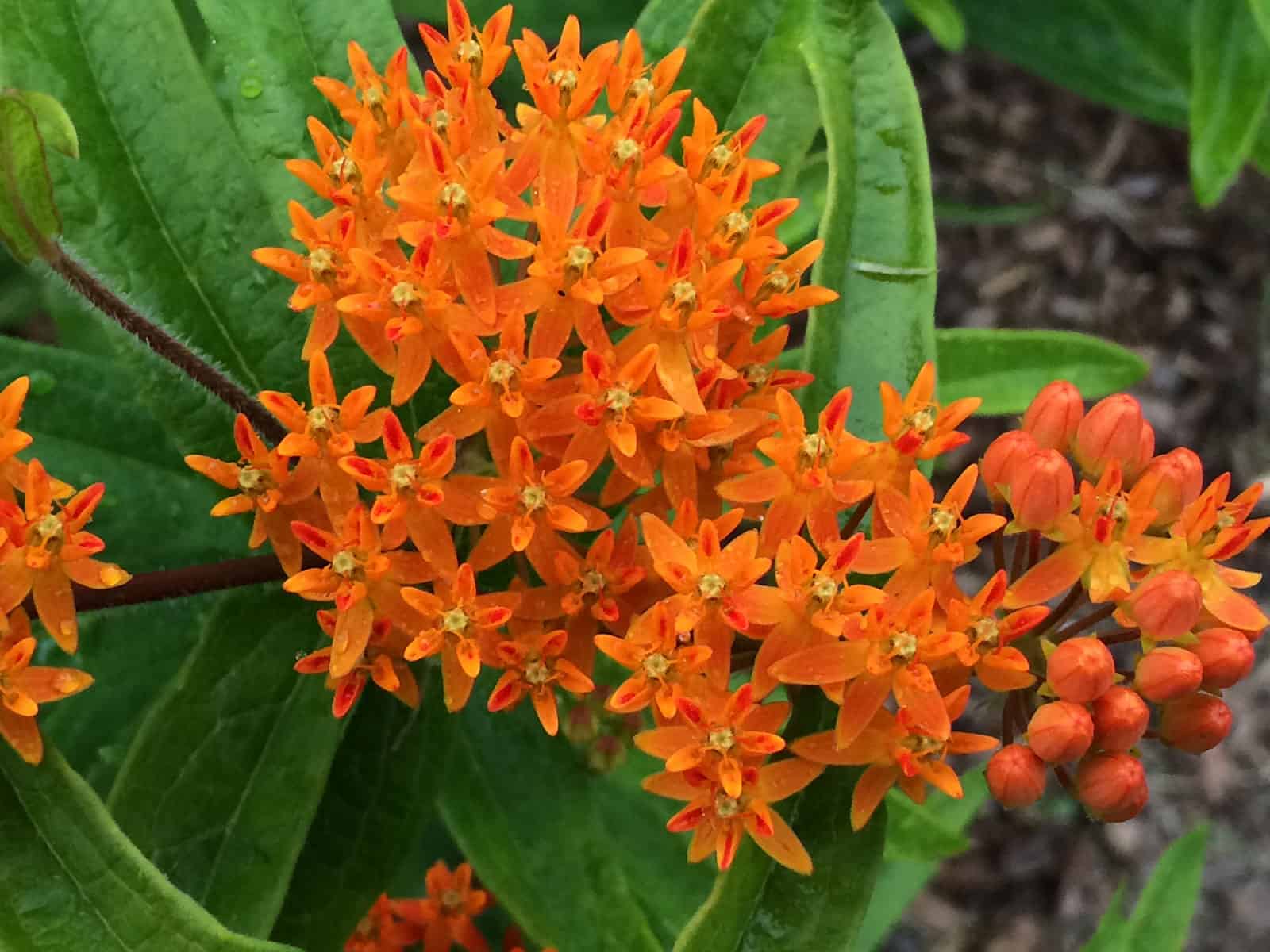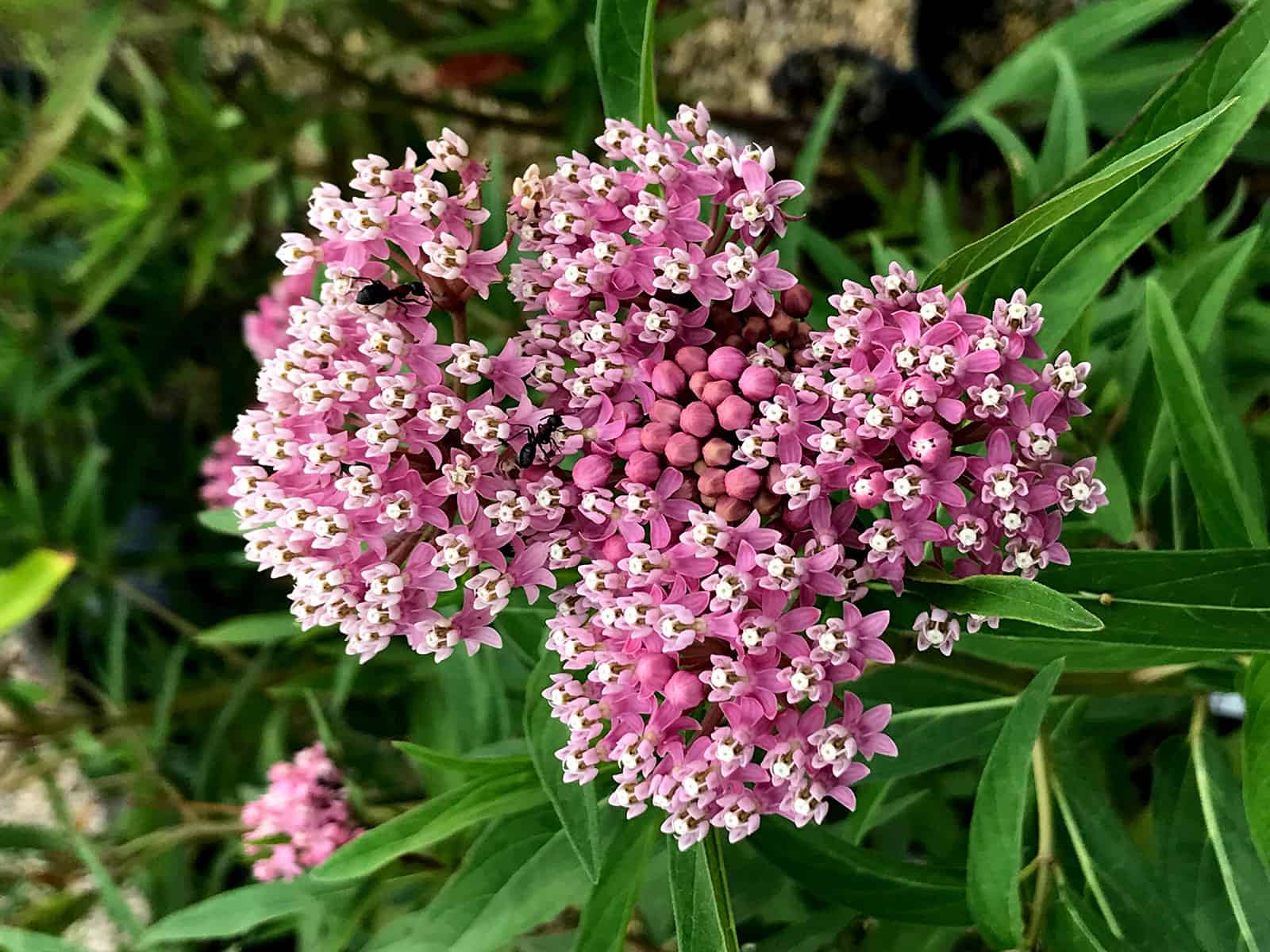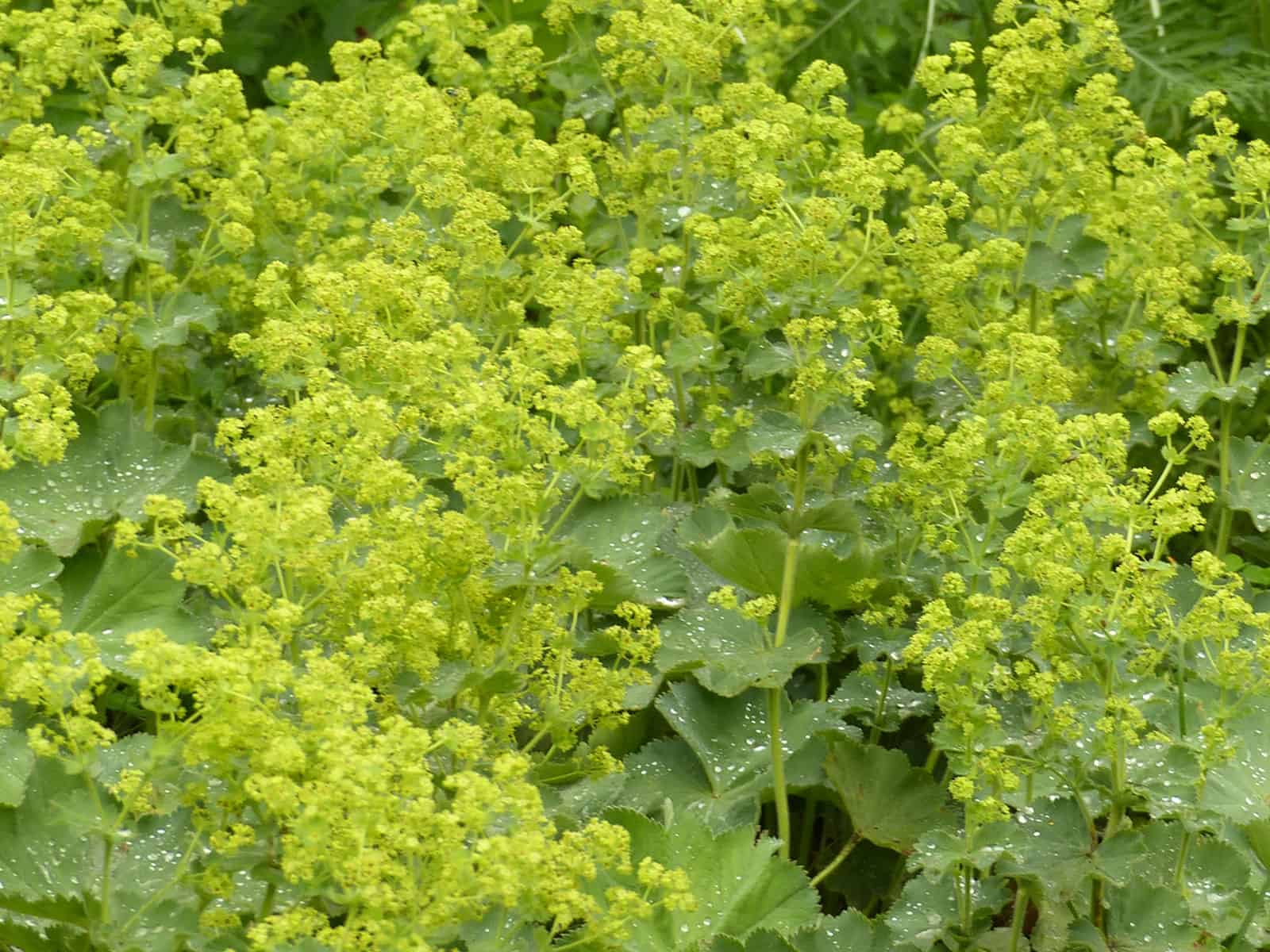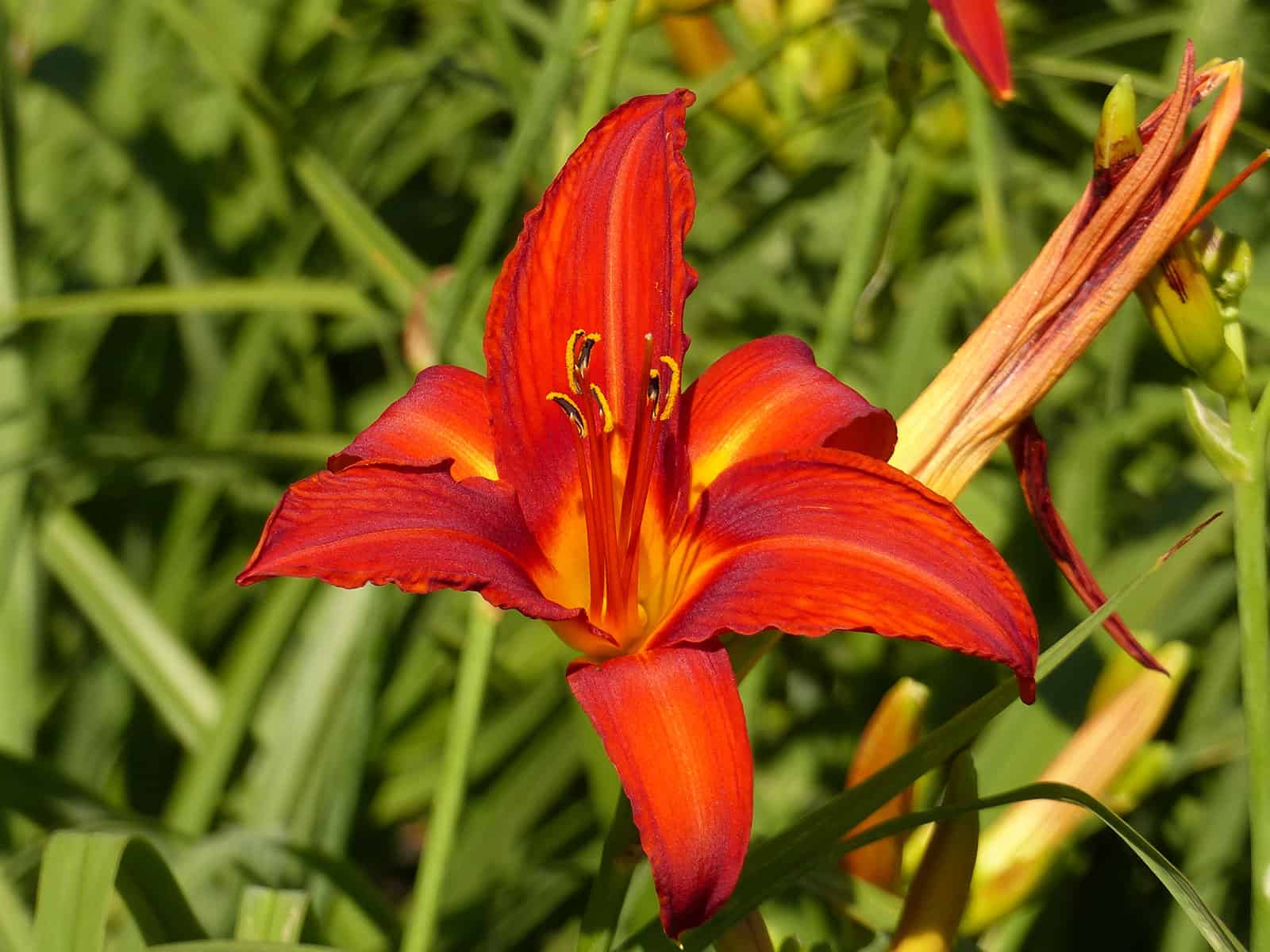
Chicago Fire Daylily features bold ruby-red trumpet-shaped flowers with chartreuse throats at the ends of the stems from early to mid summer. The flowers are excellent for cutting. Its grassy leaves remain green in color throughout the season. The fruit is not ornamentally significant.
Chicago Fire Daylily is an herbaceous perennial with tall flower stalks held atop a low mound of foliage. Its medium texture blends into the garden, but can always be balanced by a couple of finer or coarser plants for an effective composition.
This is a relatively low maintenance plant, and is best cleaned up in early spring before it resumes active growth for the season. It is a good choice for attracting butterflies and hummingbirds to your yard. It has no significant negative characteristics.
Chicago Fire Daylily is recommended for the following landscape applications:
- Accent
- Mass Planting
- General Garden Use
Chicago Fire Daylily will grow to be about 24 inches tall at maturity extending to 3 feet tall with the flowers, with a spread of 24 inches. When grown in masses or used as a bedding plant, individual plants should be spaced approximately 18 inches apart. It grows at a medium rate, and under ideal conditions can be expected to live for approximately 10 years.
This plant does best in full sun to partial shade. It prefers dry to average moisture levels with very well-drained soil, and will often die in standing water. It is not particular as to soil type or pH. It is highly tolerant of urban pollution and will even thrive in inner city environments. This particular variety is an interspecific hybrid. It can be propagated by division; however, as a cultivated variety, be aware that it may be subject to certain restrictions or prohibitions on propagation.
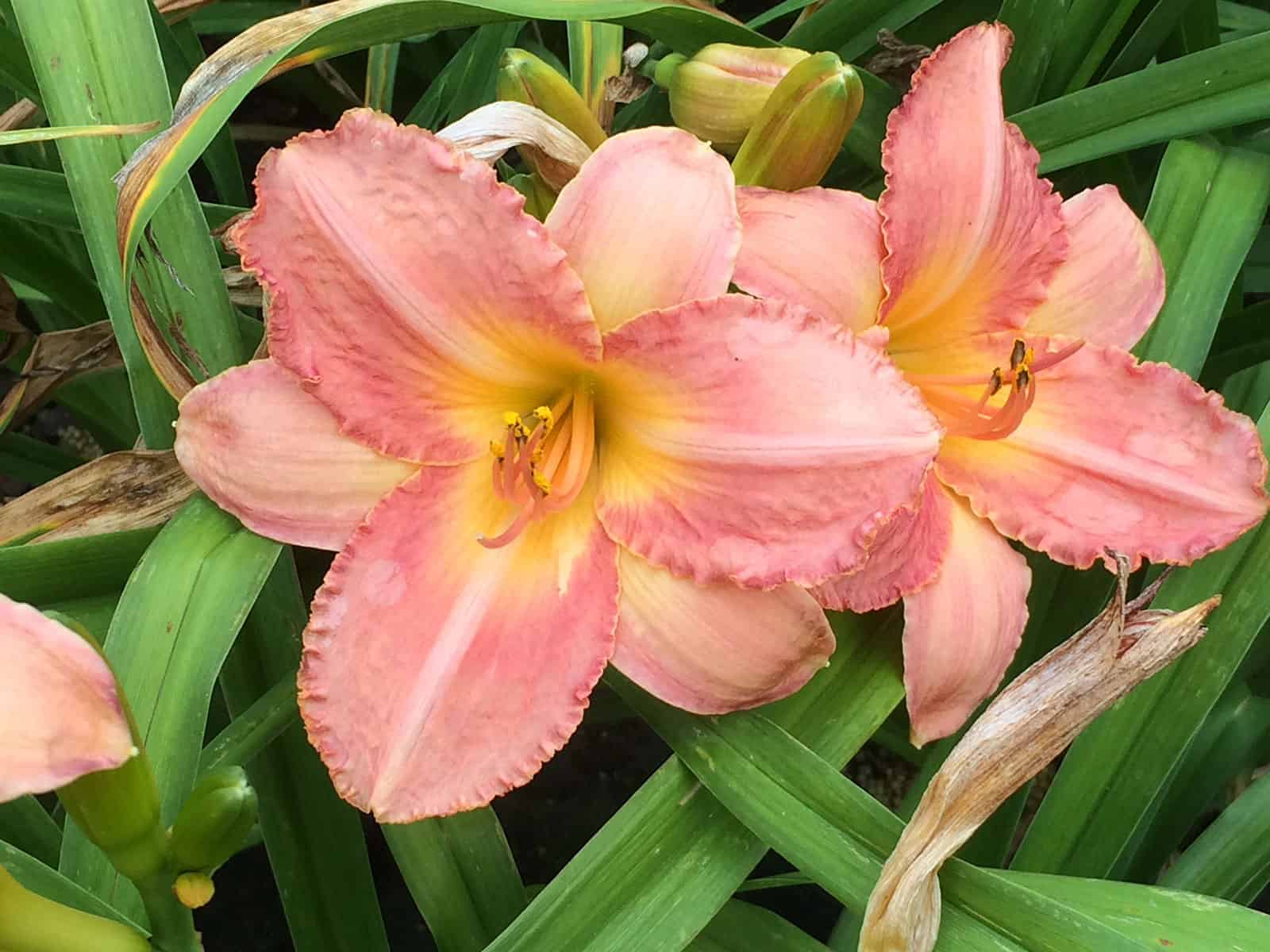
The Chicago Peach Daylily showcases soft pink and peach-colored trumpet flowers with lemon-yellow throats, rising above low-growing mounds of arching green foliage. Blooming from early to mid-season, this low-maintenance plant is perfect for borders, beds, and containers, and becomes drought-tolerant once established.
Ornamental Features: Chicago Peach Daylily presents striking pink trumpet-shaped flowers with peach hues and lemon-yellow throats at the stem ends from early to mid-summer. The flowers are excellent for cutting, and its grassy leaves stay green throughout the season.
Landscape Attributes: Chicago Peach Daylily is an herbaceous perennial featuring tall flower stalks above a low mound of foliage. Its fine texture distinguishes it from other garden plants with coarser foliage. This plant requires minimal maintenance and is best cleaned up in early spring before active growth resumes. It attracts butterflies and has no significant negative characteristics.
Recommended Landscape Applications:
- Mass Planting
- General Garden Use
- Groundcover
Chicago Peach Daylily reaches about 24 inches in height at maturity, extending to 32 inches with the flowers, and spreads approximately 24 inches. For mass planting or bedding, space individual plants about 18 inches apart. It grows at a medium rate and can live for around 10 years under ideal conditions. As an herbaceous perennial, it dies back to the crown each winter and regrows from the base each spring. Avoid disturbing the crown in late winter when it may be less visible.
This daylily thrives in full sun to partial shade and adapts well to both dry and moist locations under typical garden conditions. It is not particular about soil type or pH and is highly tolerant of urban pollution, making it suitable for inner city environments. This variety is an interspecific hybrid and can be propagated by division, though certain propagation restrictions may apply.
This Coral Bells selection has scalloped leaves that emerge gold in spring, deepening to amber and peach. Sprays of light-pink flowers appear in midsummer, after other selections are finished. Very sturdy habit, an excellent choice for hot, humid summer regions. Trim off any tired old leaves in spring. Protect from hot afternoon sun. A 2006 introduction from French breeder Thierry Delabroye discovered by his wife, Sandrine. The Heuchera villosa bloodlines in this hybrid contribute a velvety leaf surface, later flowering habit and exceptional sturdiness. USPP#16560: unlicensed propagation prohibited.
Campanula carpatica, the tussock bellflower or Carpathian harebell, is a species of flowering plant in the family Campanulaceae, native to the Carpathian Mountains of Central Europe. It is a low-growing herbaceous perennial, with long stems bearing solitary blue bell-shaped flowers. It was introduced to the Royal Botanic Garden at Kew in 1774 by Nikolaus Joseph von Jacquin. Several cultivars in shades of white, blue, pink and purple, have been developed for garden use.
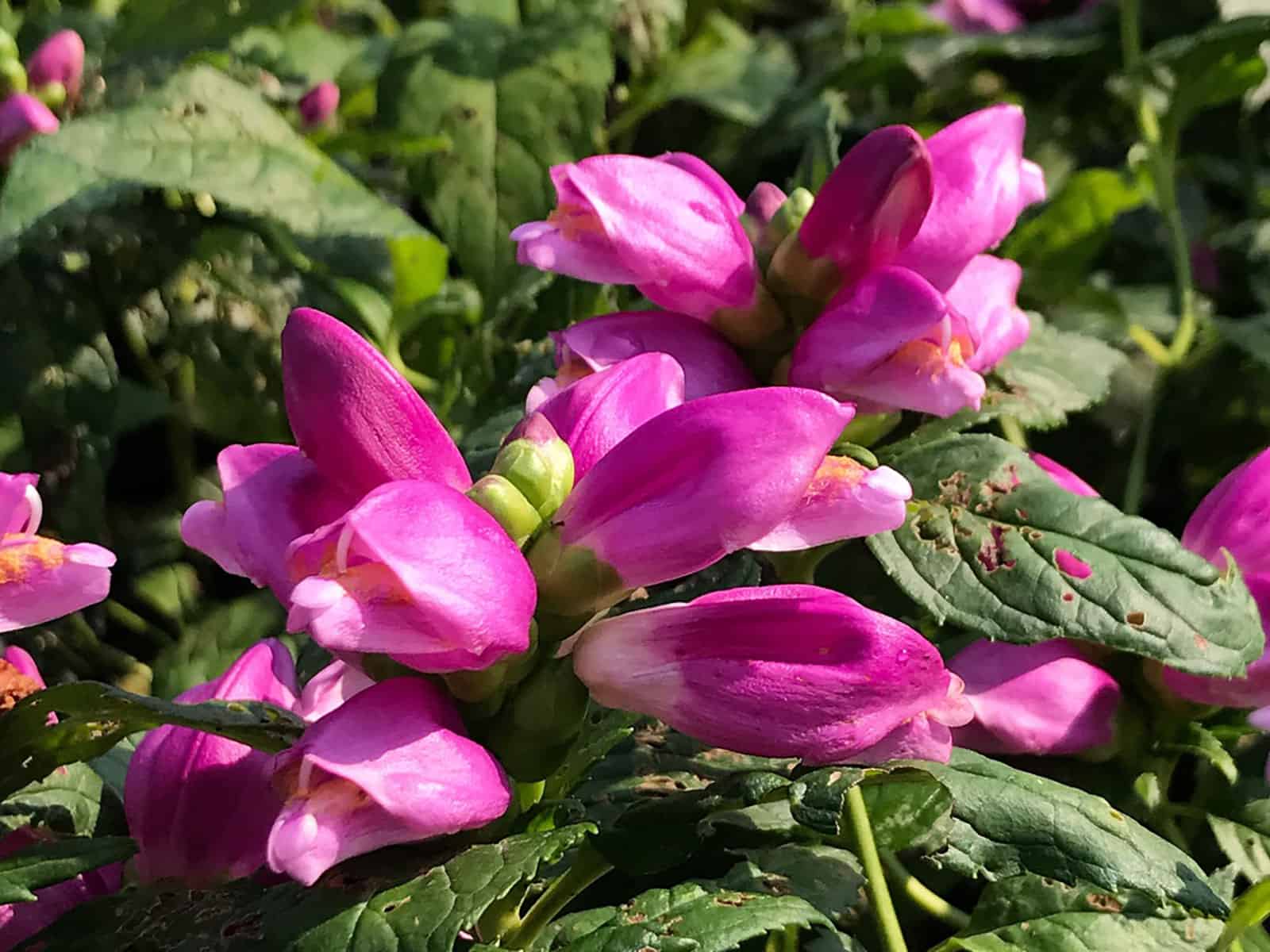
Cheerful spikes of pink snapdragon-like flowers over spreading plants. Ideal middle-of-the-border plant for contrasting color and foliage among dwarf shrubs. Thrives in shaded settings and prefers moist conditions. Herbaceous perennial.
Chelone lyonii, commonly called turtlehead, pink turtlehead or Lyon’s turtlehead, is an upright, clump-forming, rhizomatous perennial in the figwort family which typically grows 2-4’ tall on stiff, square stems. It is native to wet woodland areas and streams in the southern Appalachian Mountains from Virginia to South Carolina and west to Tennessee, northern Mississippi and northern Alabama. It has escaped gardens and naturalized in parts of New England and New York. Hooded , snapdragon-like, two-lipped, pink flowers (to 1” long) bloom in tight, spike-like terminal racemes from late summer into fall (late July to September). Flowers have puffy pink corollas with lower lips bearded with yellow hairs. Flowers purportedly resemble the heads of open-mouthed turtles, hence the common name. Ovate, coarsely-toothed green leaves (to 3-6” long) have slender petioles, rounded bases and pointed tips.
Genus name comes from the Greek word chelone meaning tortoise in reference to the turtlehead shape of the flowers.
Specific epithet honors John Lyon (1765-1814), American botanist, who was an early explorer of the southern Appalachians.
‘Hot Lips’ features rosy pink fall flowers (richer pink than the species), bronze green maturing to dark green foliage (deeper green than the species), and red stems.
Anemone ‘Wild Swan’ unlike the Japanese hybrids that bloom in fall only, this little beauty blooms from spring until frost. Dainty white flowers, with a blush of lavender/purple on the reverse side, dance above the lovely green foliage.
This introduction is a very long-blooming perennial, forming a spreading mound of bright-green ferny leaves. Small butter-yellow daisies appear in succession from early summer to late fall, each petal delicately serrated at the tips. Shear plants lightly in August to encourage renewed blooming. Great for the front of a sunny border, or planting in mixed containers. Tolerates heat and humidity. Plants will flower best in a sunny location. Blooms are larger, and flower colour is darker than the older selection ‘Moonbeam’. From Blooms of Bressingham®. USPP#16096: unlicensed propagation prohibited.
Asclepias tuberosa is a species of milkweed native to eastern North America. It is a perennial plant growing to 0.3–1 metre tall, with clustered orange or yellow flowers from early summer to early autumn. The leaves are spirally arranged, lanceolate, 5–12 cm long, and 2–3 cm broad.
Cinderella is part of the Asclepias genus and is a Swamp milkweed variety. Its scientific name is Asclepias incarnata ‘Cinderella’. This variety typically blooms in the following colours: French rose, and typically produces a medium vanilla fragrance.
Alchemilla mollis, the garden lady’s-mantle or lady’s-mantle, is a herbaceous perennial plant native to southern Europe and grown throughout the world as an ornamental garden plant. It grows 30 to 45 cm tall, with leaves that are palmately veined, with a scalloped and serrated margin. The stipules are noteworthy in that they are fused together and leaf like. The chartreuse yellow flowers are held in dense clusters above the foliage. This plant, together with a similar but dwarf variety, A. erythropoda, has gained the Royal Horticultural Society’s Award of Garden Merit.


